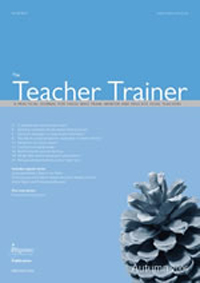Headstrong: A book of Thinking Frames for Mental Exercise
Tessa Woodward, Editor of Pilgrims' The Teacher Trainer, HLT's elder sister
(available from TessanSeth@aol.com)
reviewed by Mario Rinvolucri, Pilgrims, UK
In this book you will find a wealth of strategies for making sense of the world, strategies that Tessa Woodward has drawn together from many sources, from drama training , from NLP from de Bono's thinking about thinking, and from Transactional Analysis etc. These she has decided to call " thinking frames".
Here are some of them, as listed on the first half of the book's contents page:
The list
The four hungers: stimulation, recognition, structure and meaning
The logical levels framework
Five broadening frameworks
Catergorising
Reversals etc....
If we take the most opaque of the chapter headings above, the five broadening frameworks, I can help you understand more about the book by asking you to look at what these five are.
The first is Pros and Cons. In this you analyse a situation in terms of its advantages and disadvantages.
The second is Edward de Bono's PMI thinking frame: Plus, Minus and
Interesting. At this point you may be wondering how you can apply any of this thinking frame stuff to your practical teaching. Well, here is how
a brilliant teacher trainer, the late Hans Eberhardt Piepho, applied PMI to a class of 14 year-olds learning English in a German school.
He asked them to look through the next unit of the coursebook and pick out anything they thought was Plus Minus or Interesting.
One boy picked out from a grammar box the sentence:
He has more socks than me. Piepho, on asking him why, was told angrily that this boy's brother did indeed have more socks than he did!
Piepho ran the rest of the lesson so it focused on sibling rivalry, as well as the comparatives. Here you see PMI in action in nitty-gritty EFL teaching.
The third is Garret Hardin's Filters against Folly
The fourth is Virginia Satir's Five Communication Patterns. She suggests that people in a group tend to fall into five categories:
Blamers
Computers
Distracters
Levellers
Placators....
Have you come across any of these among your students?
The fifth broadening framework is de Bono's Six thinking hats.
If you are an EFL teacher you will find these thinking filters seriously help you to see clearly what is going on in your groups. They allow you to look at teaching and learning problems from a variety of different angles.
Tessa Woodward has taken the risk of self-publishing this book and I wish it the great success it deserves.
Some critical thoughts
1 I feel that the book should be double its modest 160 small pages. Many readers may need more examples and may find themselves reading too quickly and superficially. Was Tessa somehow in a hurry as she wrote. or have I maybe read over-hurriedly?
2. The title Headstrong is opaque. The main semantic priming of this adjective is "pig-headed", "obstinate", "wilful," and this is just the way the language is.
Tessa, I guess, meant that this book is about HEAD matters, rather than heart or stomach ones.
People thinking of buying the book have to have this explained to them,
and titles you have to explain are deficient ones.
3. I do not really know how and why these particular thinking frames were chosen when there are so many others to choose from and I do not think that Tessa explains anywhere what her criteria for these choices are.
To have explained would have been useful.
Having said these niggling things I would really recommend all HLT readers to have a look at this book.
Mario


Please check the Neuro Linguistic Programming course at Pilgrims website.
Please check the Creative Drama For The Language Classroom course at Pilgrims website.
Please check the Transactional Analysis course at Pilgrims website.


|